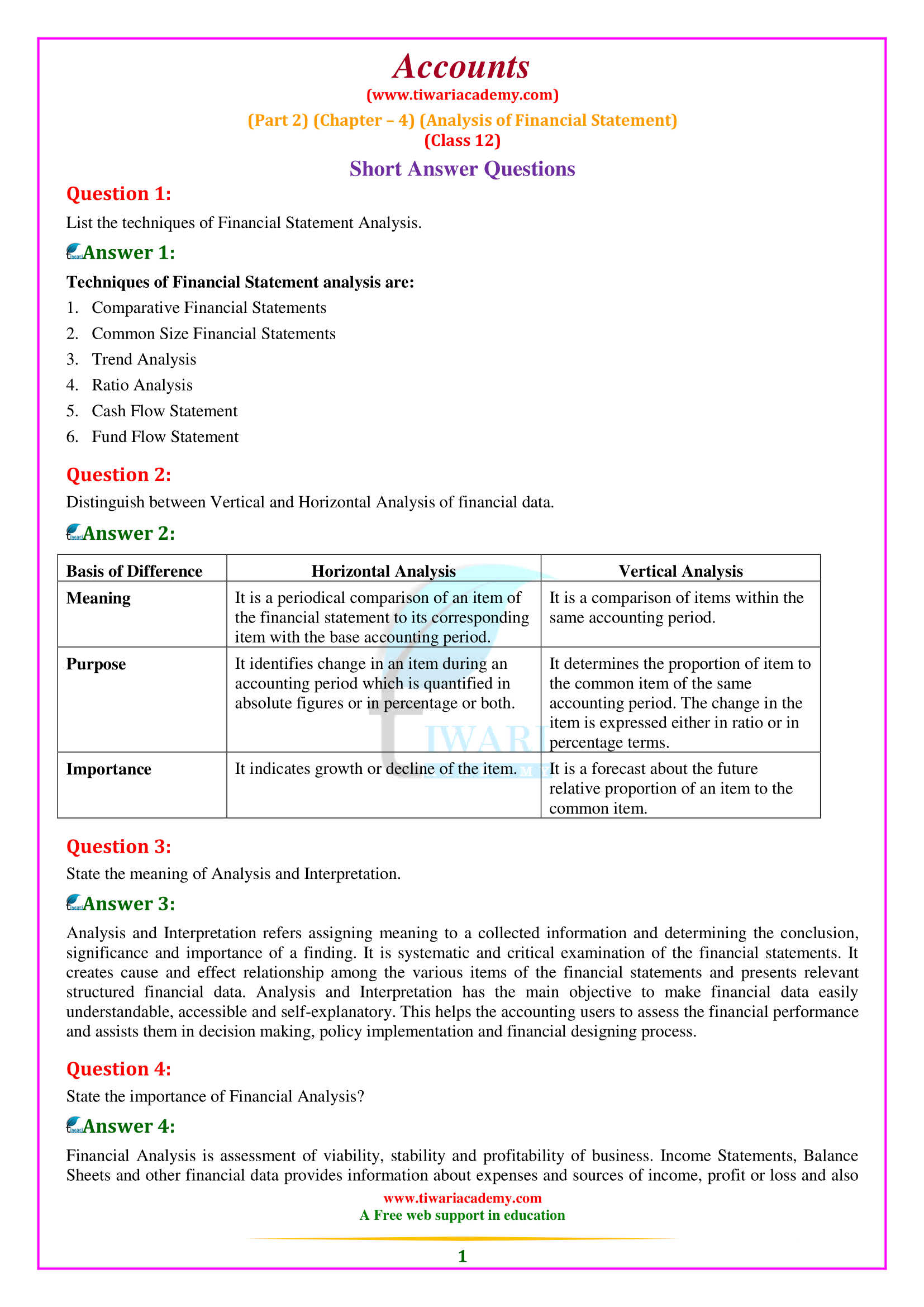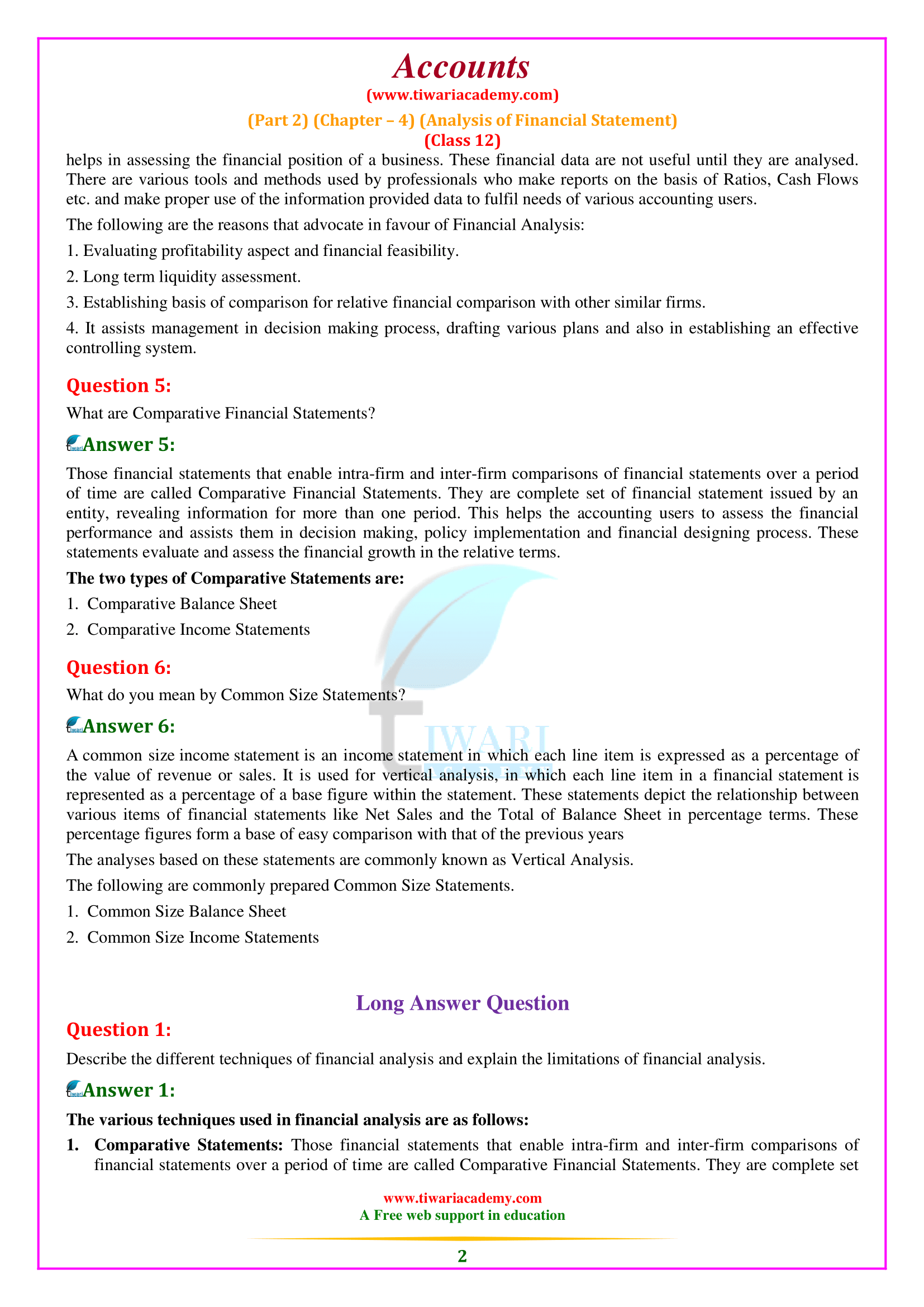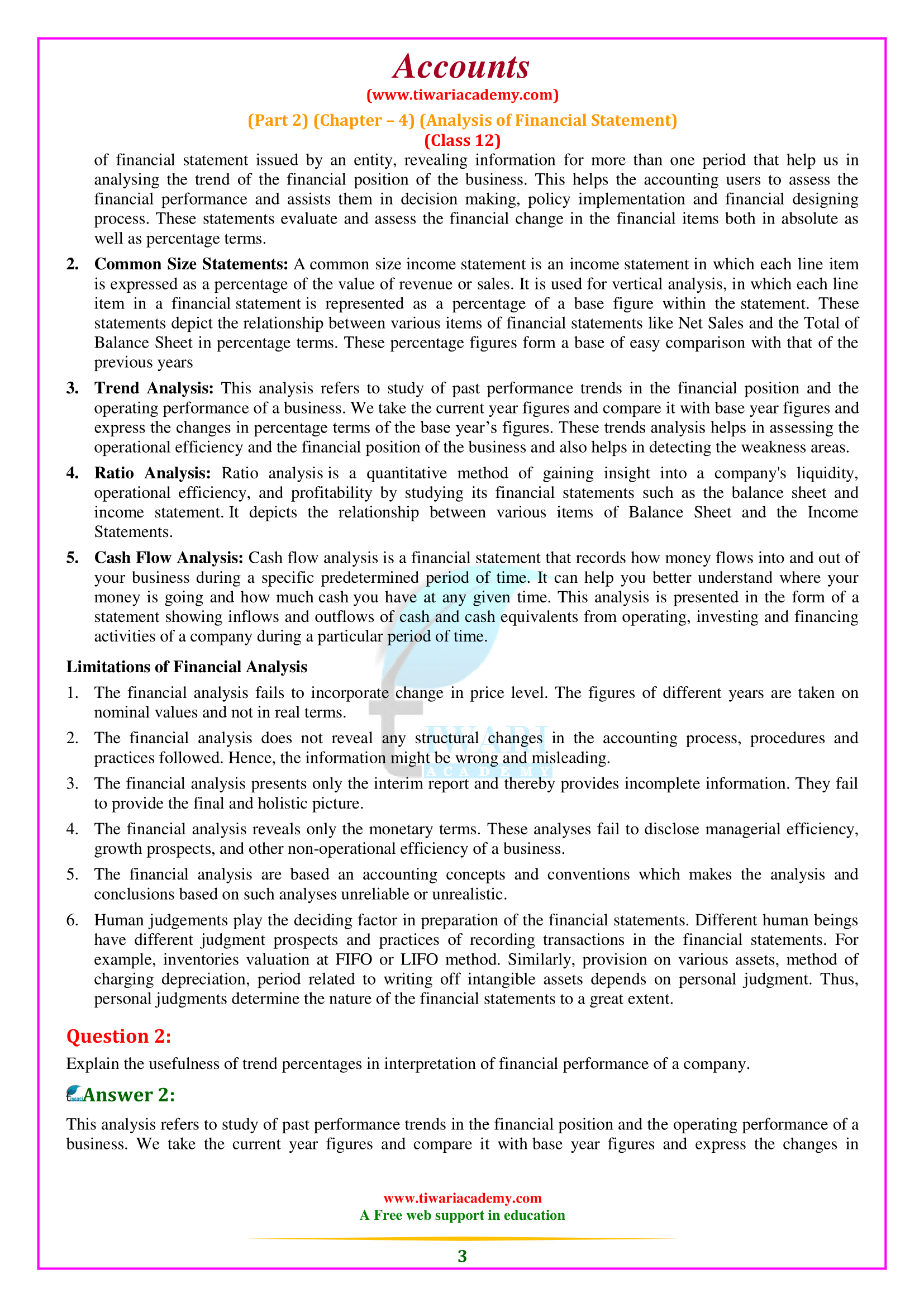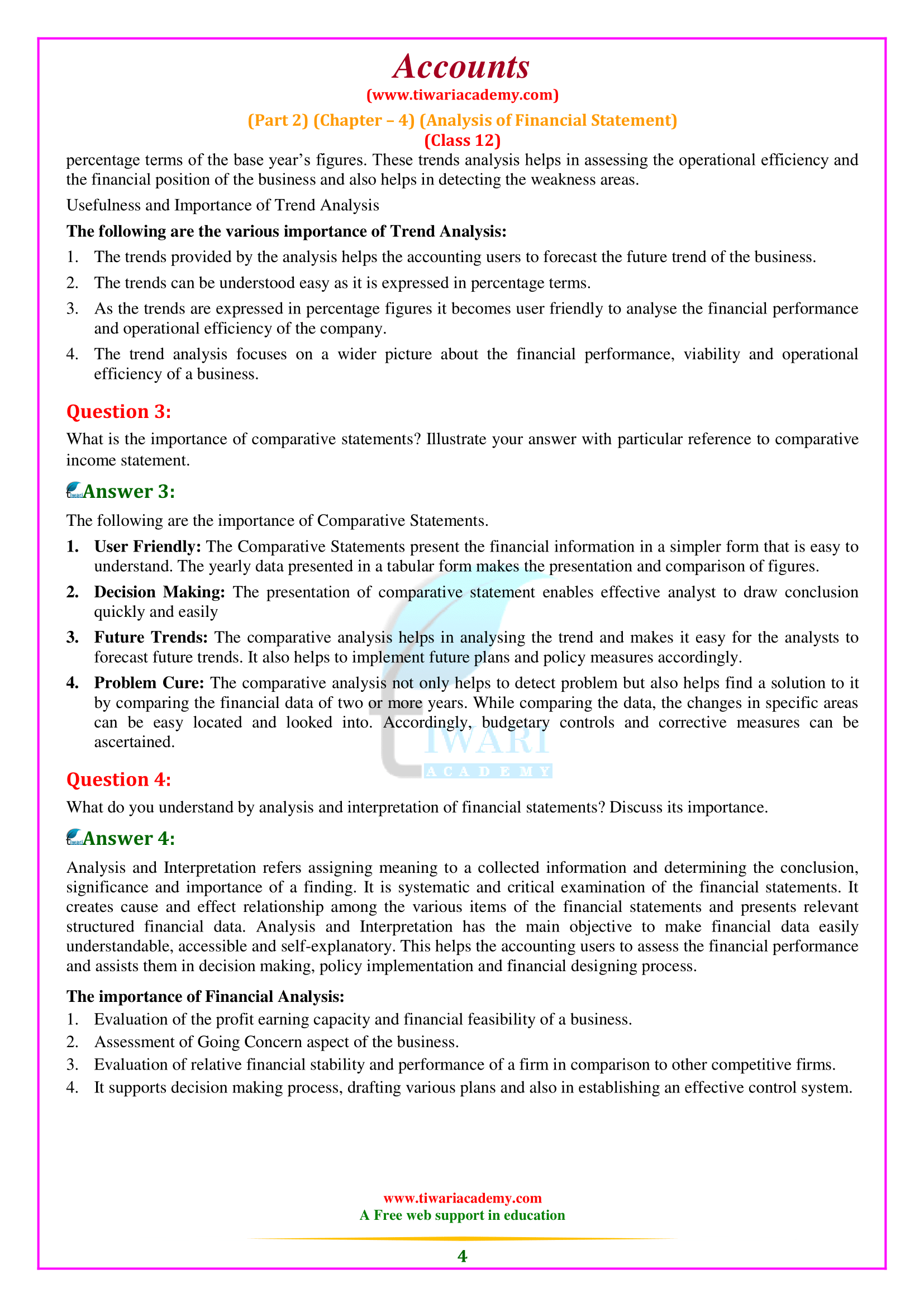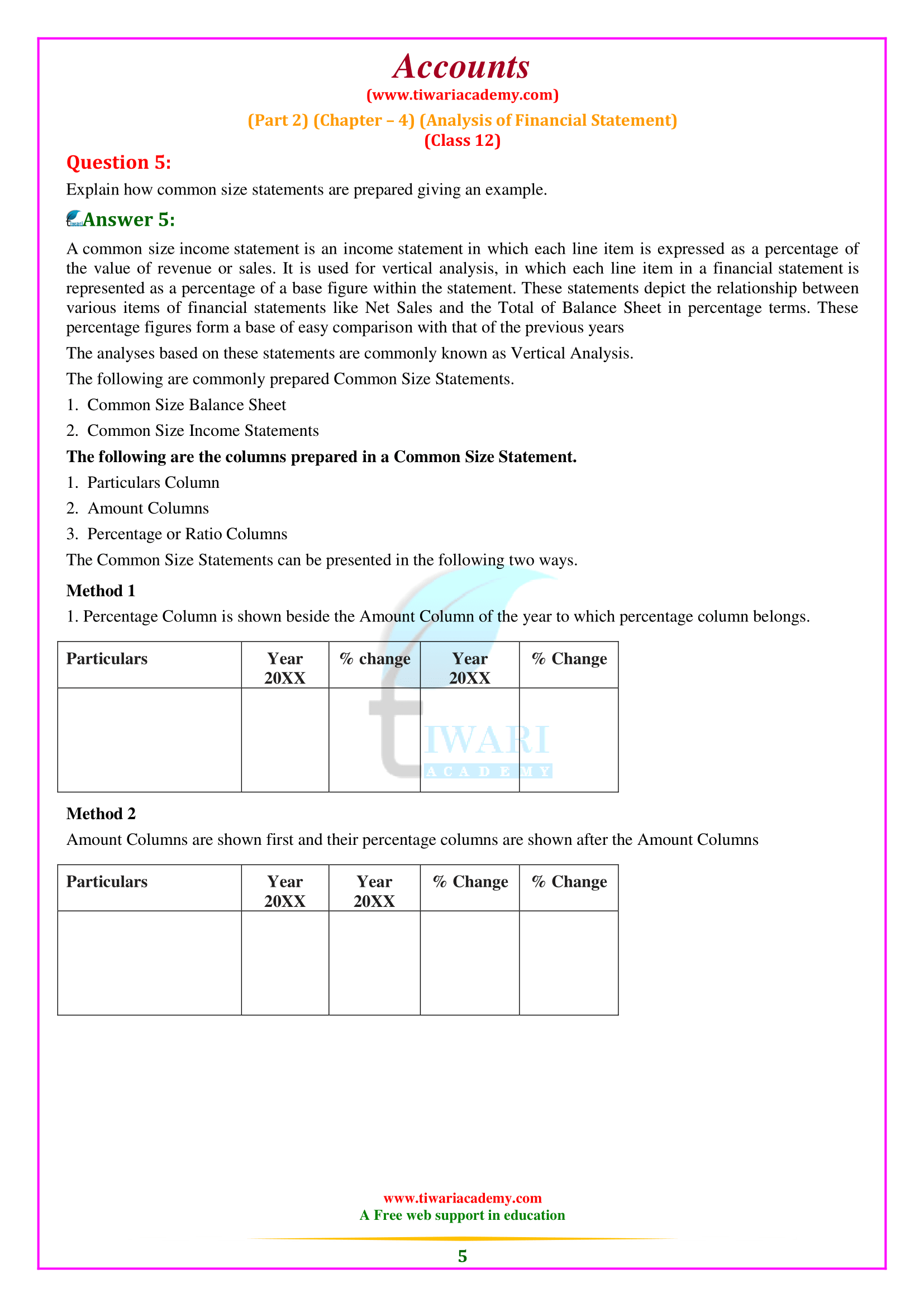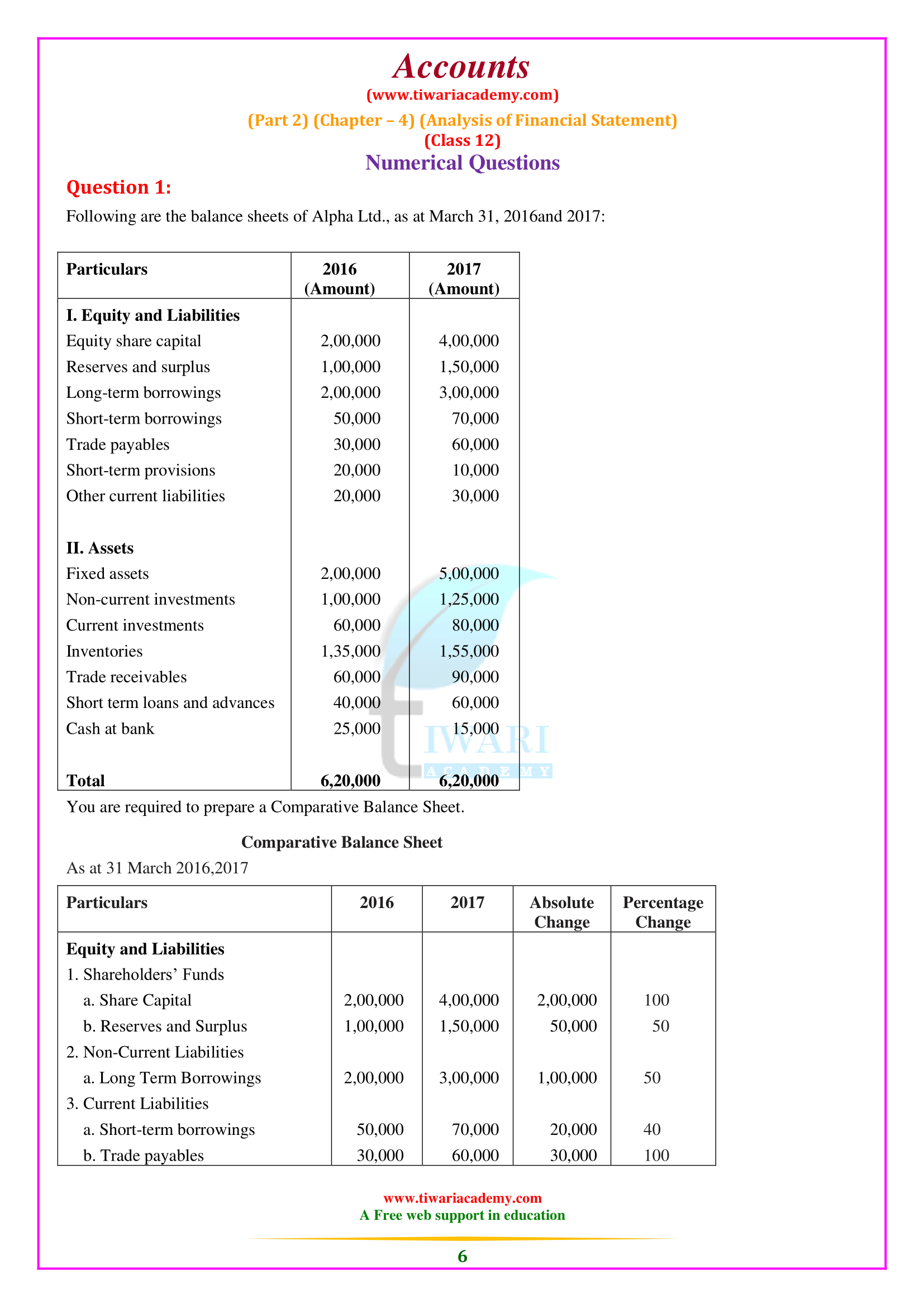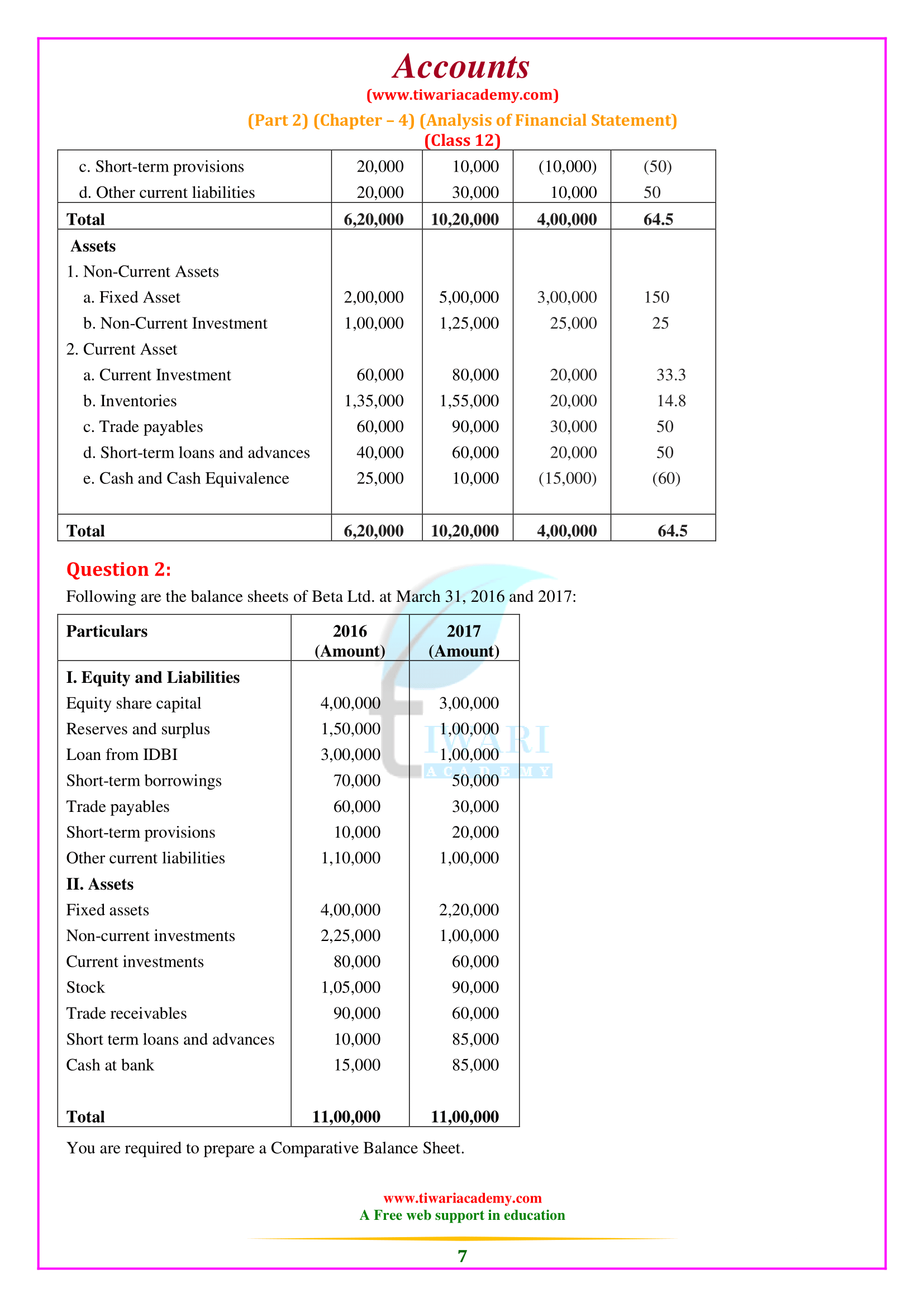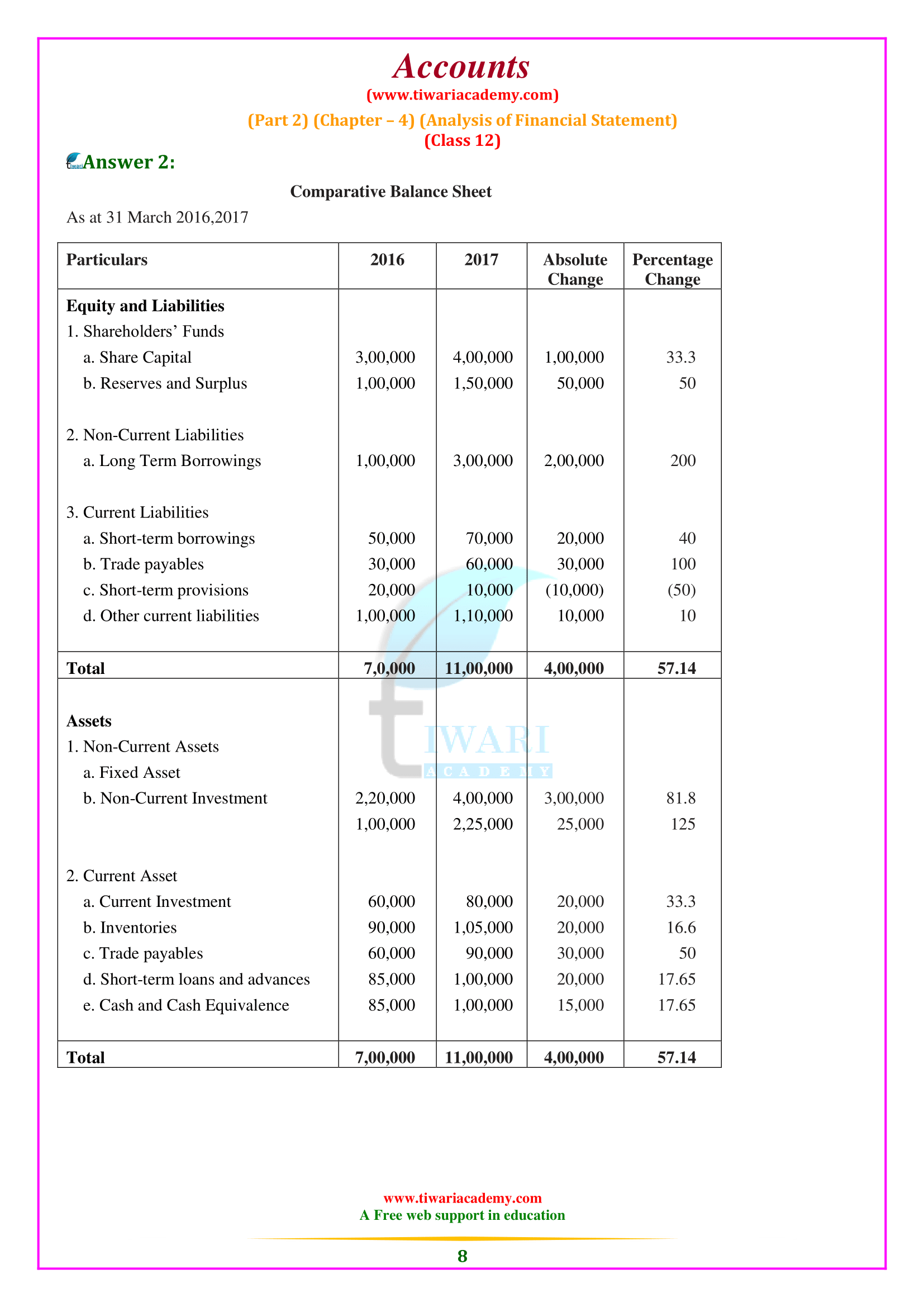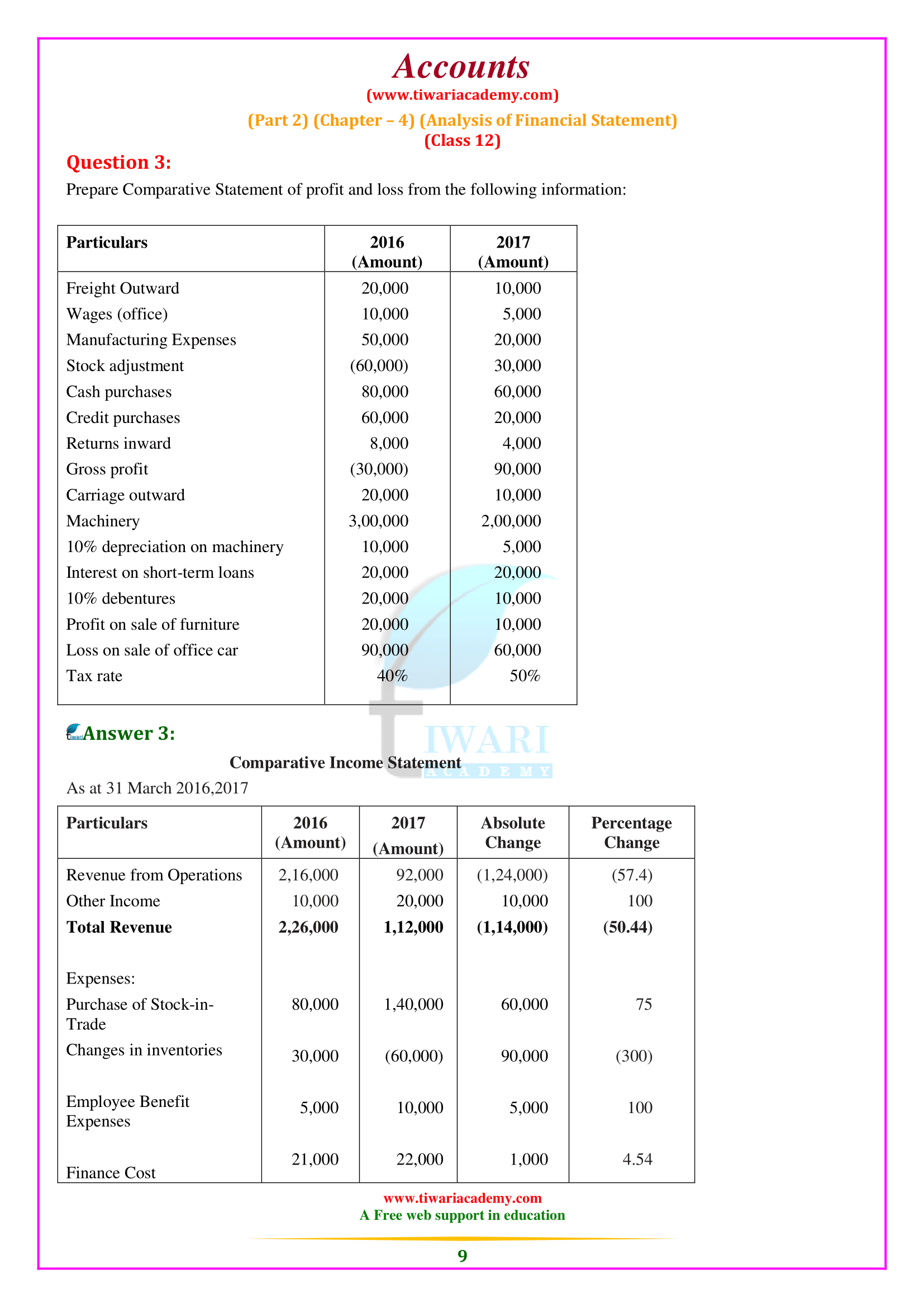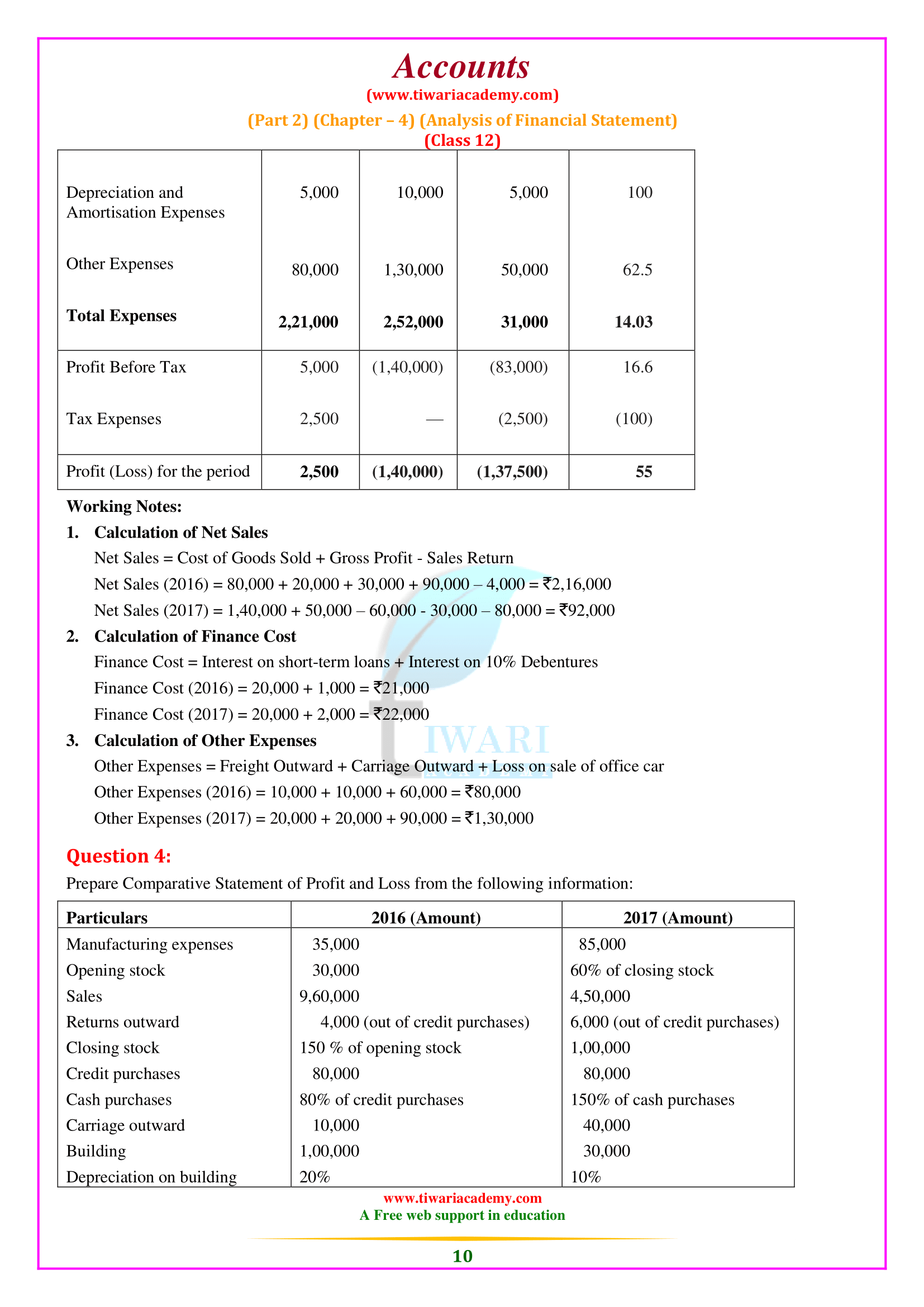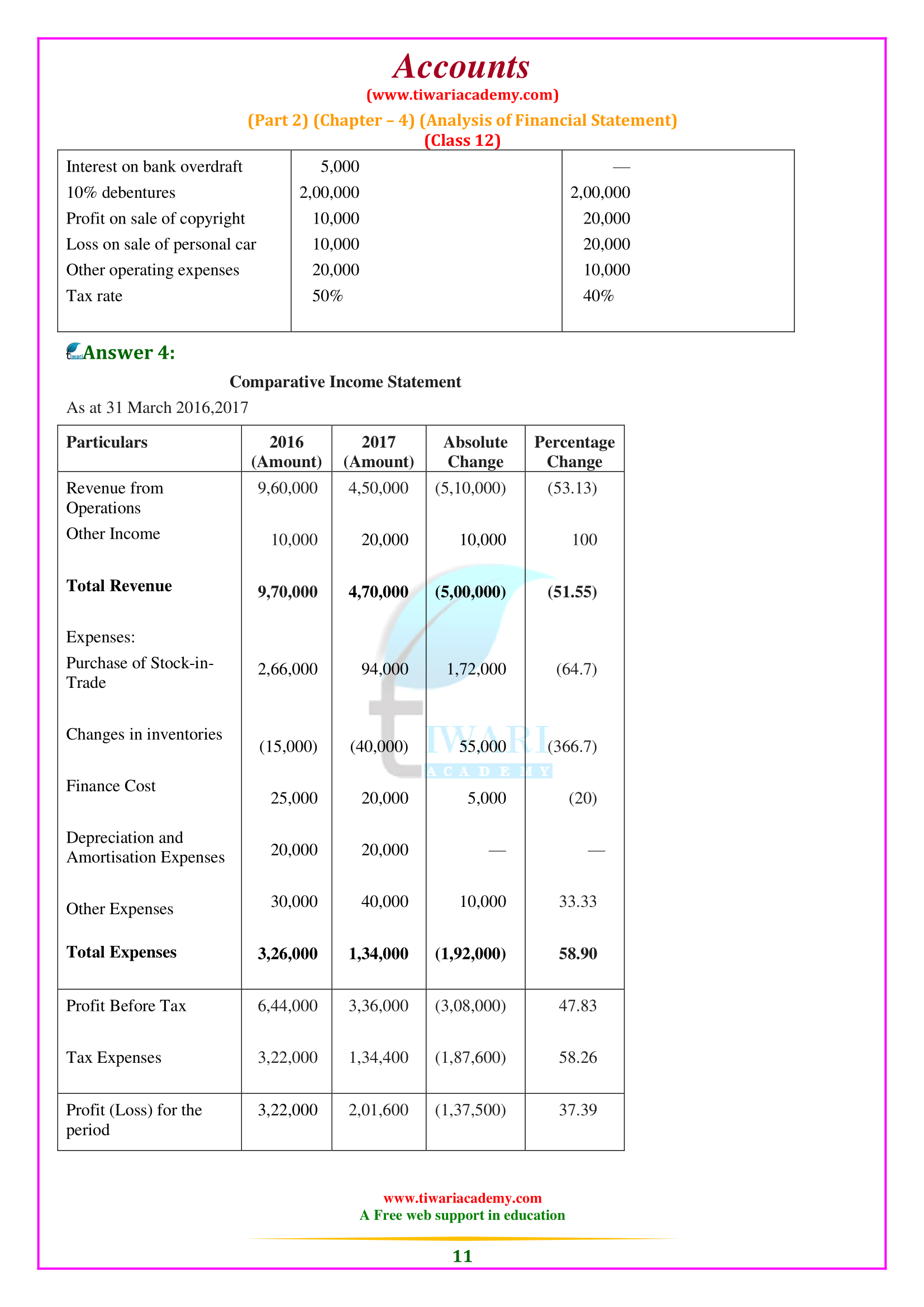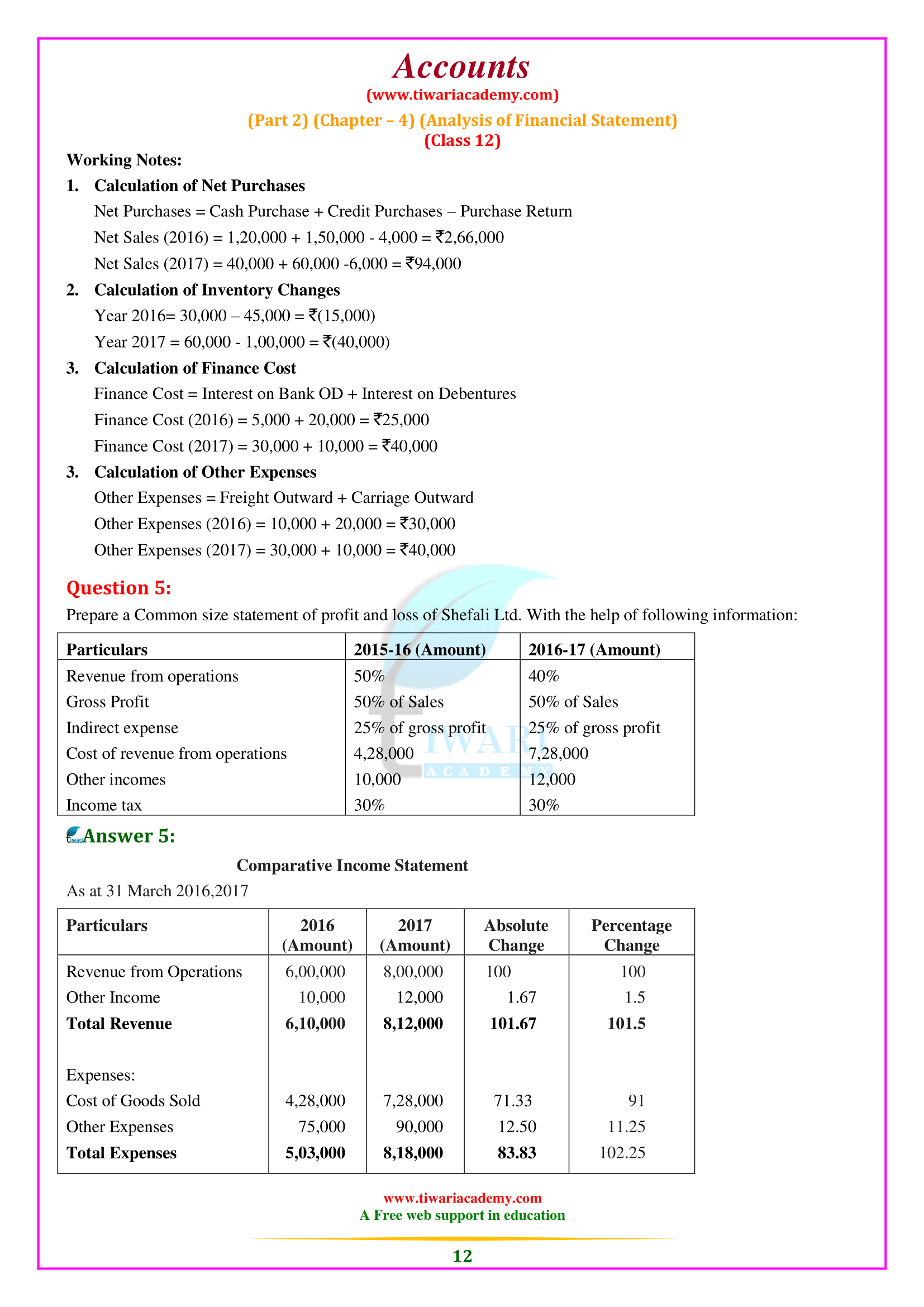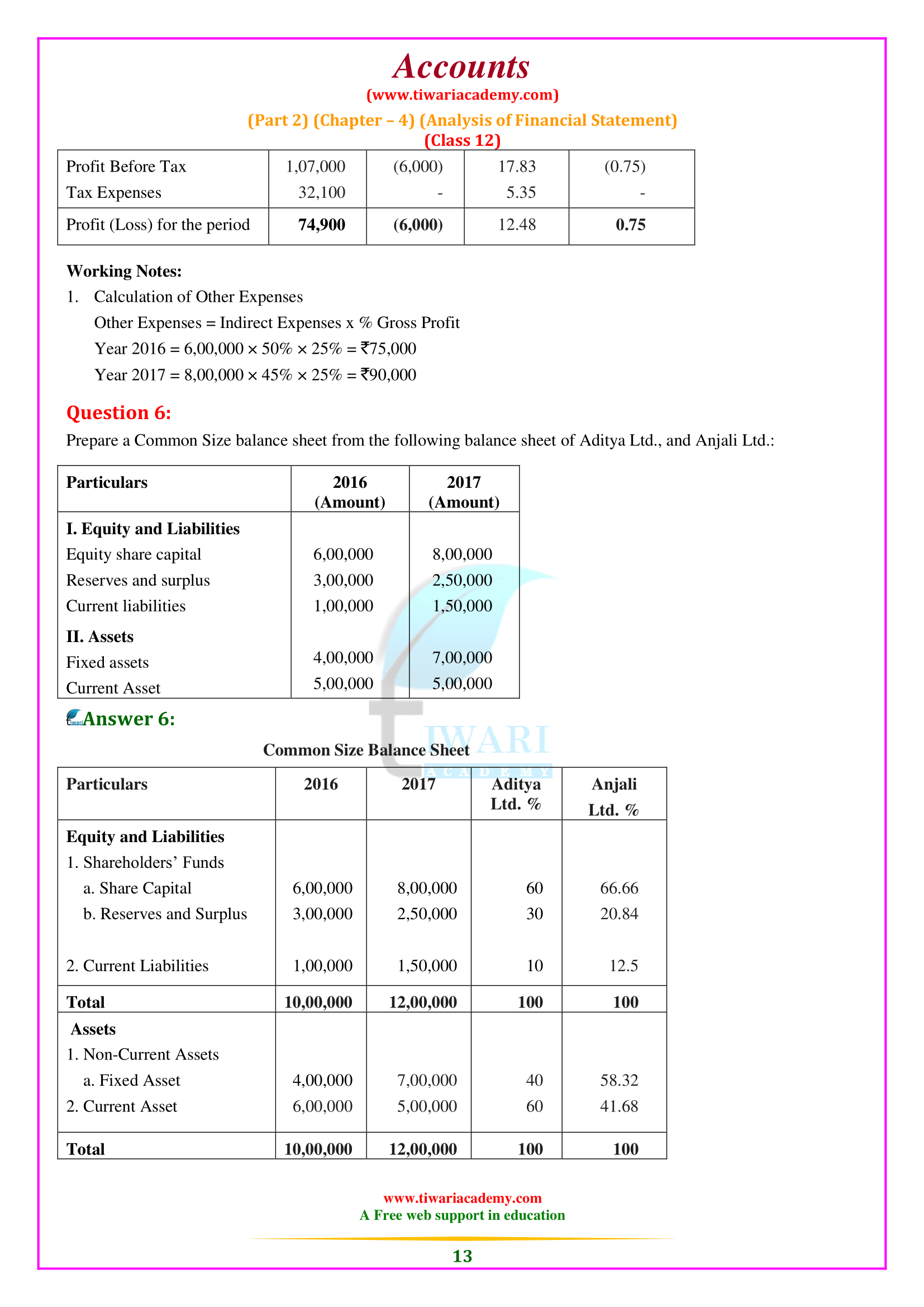NCERT Solutions for Class 12 Accountancy Part 2 Chapter 4 Analysis of Financial Statements. Students of all board who are using NCERT Books can take the benefits of these exercises solutions prepared for academic session 2025-26. Extra important questions and notes based on chapter 4 are also given here to download in PDF file format free to use. All the contents on Tiwari Academy is free to use without any registration.
Class 12 Accountancy Part 2 Chapter 4 Question Answers
Class 12 Accountancy Part 2 Chapter 4 Analysis of Financial Statements
| Class: 12 | Accountancy (Part 2) |
| Chapter: 4 | Analysis of Financial Statements |
| Contents: | NCERT Solutions and Study Material |
What are Analysis of Financial Statements?
The process of critical evaluation of the financial information contained in the financial statements is called “analysis of financial statements” to make decisions about and understand the operations of the company. It is a study of the relationship between various financial facts and figures, as they occur in a set of financial statements, and assessing their financial health and prospects to get an idea of a company’s profitability and operational efficiency. Explains them for Future.
The term “financial analysis” includes both “analysis and interpretation”. The term analysis means the simplification of financial data by the methodological classification given in the financial statements. Interpretation means clarifying the meaning and significance of data. These two complements each other. The analysis is meaningless without interpretation and interpretation without analysis is difficult or even impossible.
Significance of Analysis of Financial Statements
Financial analysis is the process of identifying a company’s financial strengths and weaknesses by establishing an appropriate relationship between various balance sheet items and profit and loss statements. Financial analysis can be done by company management or parties outside the company, namely owners, trade creditors, lenders, investors, unions, analysts, and others. The nature of the analysis will vary depending on the objective of the analyst. A technique often used by an analyst is not required to serve the purpose of other analysts because of differences in analyst interests. Financial analysis is useful and meaningful to various users in the following ways:
Finance Manager
Financial analysis focuses on facts and relationships related to managerial performance, corporate efficiency, financial strengths and weaknesses, and company solvency. A finance manager should be equipped with various analysis tools to make rational decisions for the company. Analysis tools assist in the study of accounting data to determine the continuity of operating policies, testing the investment value of a business, credit rating, and efficiency of operations. Techniques are equally important in the area of financial control, allowing the financial manager to continuously review the company’s actual financial operations to analyze the causes of significant deviations, which can help with corrective actions where indicated is.
Senior Management
The importance of financial analysis is not limited to the CFO alone. It has a wide scope that includes senior management in general and other functional managers. The management of the company will be interested in all aspects of financial analysis. It is your overall responsibility to ensure that the company’s resources are used most efficiently and that the company’s financial position is strengthened. Financial analysis helps management to measure the success of a company’s operations, evaluate individual performance, and evaluate internal control systems.
Trade Accounts Payable
Business accounts payable, through the analysis of financial statements, not only evaluate a company’s ability to meet its short-term obligations but also see the possibility that it will continue to hold all your finances in the future. Your ability to fulfill obligations. Accounts payable are particularly interested in the ability of the business to meet its claims in a very short period. Therefore, your analysis will assess the liquidity position of the company.
Lender
Provider of long-term debt care about the solvency and long-term survival of the business. They analyze the profitability of the company over some time, its ability to generate cash, to be able to pay interest and repay principal, and the relationship between different sources of funds (capital structure relationships). Long-term lenders review historical financial statements to assess your future credit and profitability.
Investors
Investors who invest their money in the shares of the company are interested in the profits of the company. As such, they focus on analyzing the company’s current and future profitability. They are also interested in the company’s capital structure to determine its impact on the company’s profit and risk. They also evaluate the efficiency of Management and determining whether a change is necessary. However, in some large companies, shareholders’ interest is limited to deciding whether to buy, sell, or hold shares.
Labor Unions
Unions analyze financial statements to assess whether they can currently increase wages and whether they absorb wage increases through increased productivity or by increasing prices. Can.
Others: Economists, researchers, etc., analyze financial statements to study the current economic and business conditions. Government agencies require this for price regulations, taxes, and other similar purposes.
